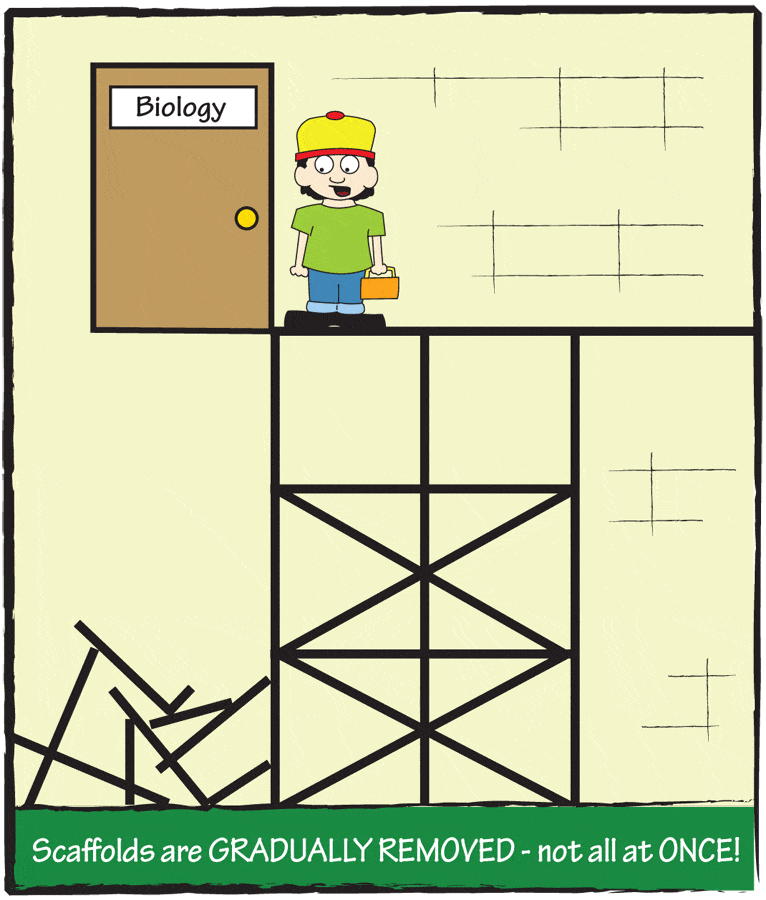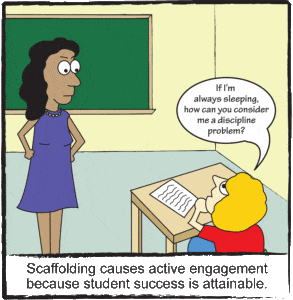Providing Scaffolding for Students
March 22, 2017 February 9, 2024
How can scaffolding help students become successful with the grade-level curriculum?

When I think of scaffolding, I think of the temporary support structure erected on the side of a building that allows workers to access parts of the building that they may not otherwise be able to reach in order to accomplish a particular task. Once the task or job is complete, the scaffolding is removed. It is the same idea as providing scaffolding for struggling students. All students have access to the same high standards, but those who struggle with meeting the demands of those standards are provided with scaffolding in order to reach the heights necessary to be successful. And, once students are successful, the scaffolding can be gradually removed.
You make decisions every day about meeting the needs of your students. In order to provide access to grade-level standards for all students, you must consider students’ needs, abilities, and preferences. For those students who need the extra support, scaffolding can make the difference between success and failure to succeed.
Scaffolding learning can be described as temporary strategies and practices that allow students to access grade level curriculum. It is a tool that you can use to individualize instruction around specific instructional needs of your students. When you understand students’ current levels and prior knowledge, you are able to make better decisions about addressing their needs. Collecting and using appropriate data is an important tool when making these decisions and allows you to match expectations to students’ instructional needs.
Scaffolding learning can take many forms. Acceleration and previewing can help to bridge the gap between what students already know and what they need to learn. Additionally, when students are exposed to new content prior to the lesson, they experience that “double dose” that research says is critical to success for at-risk students. Other strategies that allow for access to grade level content include the following: break down the task into smaller chunks or assigning one par/piece at a time; give helpful tips or hints; cooperative learning; think alouds or modeling; concrete prompts or cues; strategic questioning; and coaching. In the beginning, the scaffolding should be concrete and visible.

Student engagement is one of the many benefits of scaffolding for at-risk students. Also, scaffolding can motivate students to stay with the learning task because they experience some success which can lead to further success. Scaffolding can also reduce some of the frustration that so often comes with lack of success.
The important thing to remember about scaffolding learning is that it provides temporary support, is short term and allows for classroom participation until students have acquired the necessary skills to perform on their own. The ultimate goal is that students become self-reliant, independent learners. Finally, the support is gradually pulled away until it is no longer needed. Just as the scaffolding against a building is removed when it has done what was intended, so is the scaffolding for learning removed when it is no longer needed.
